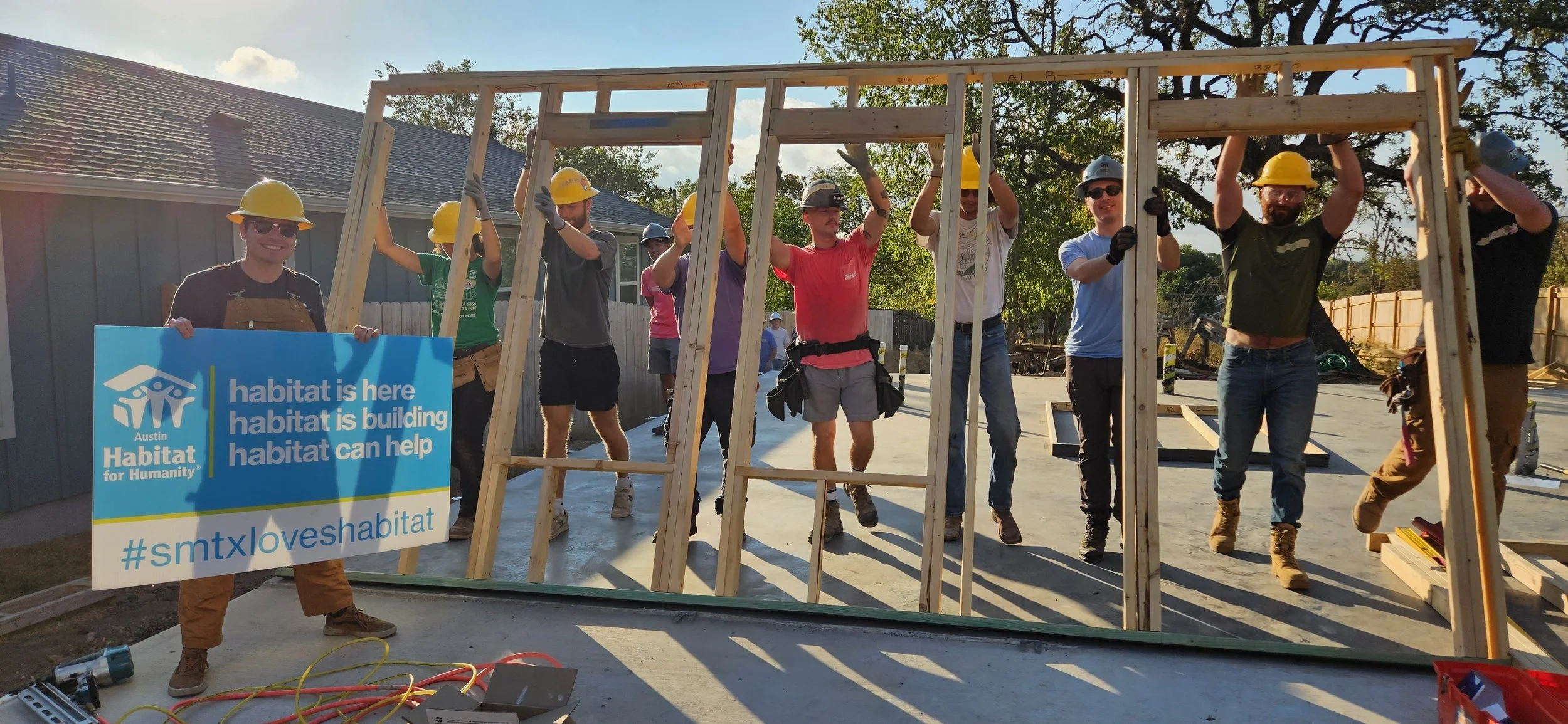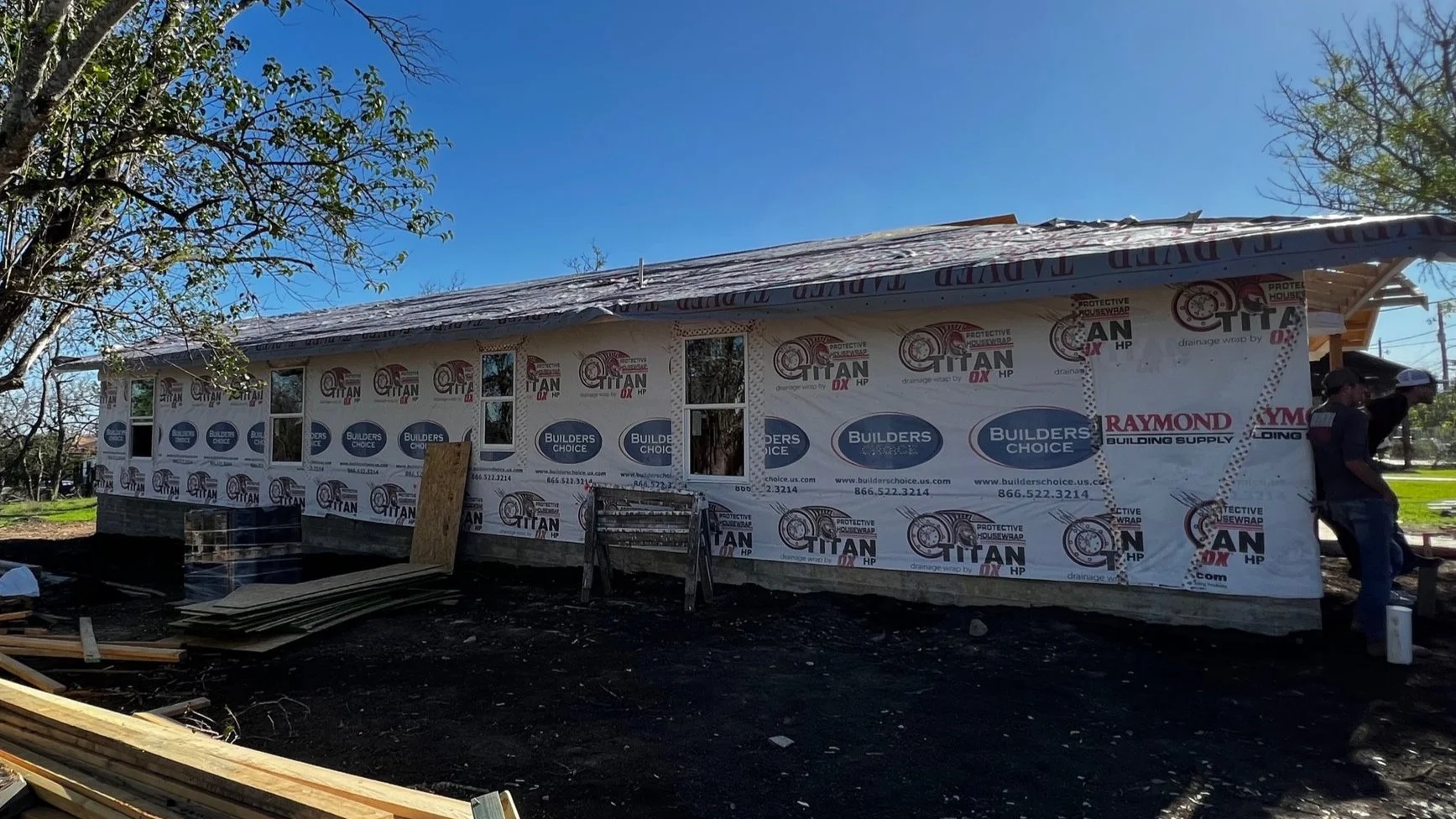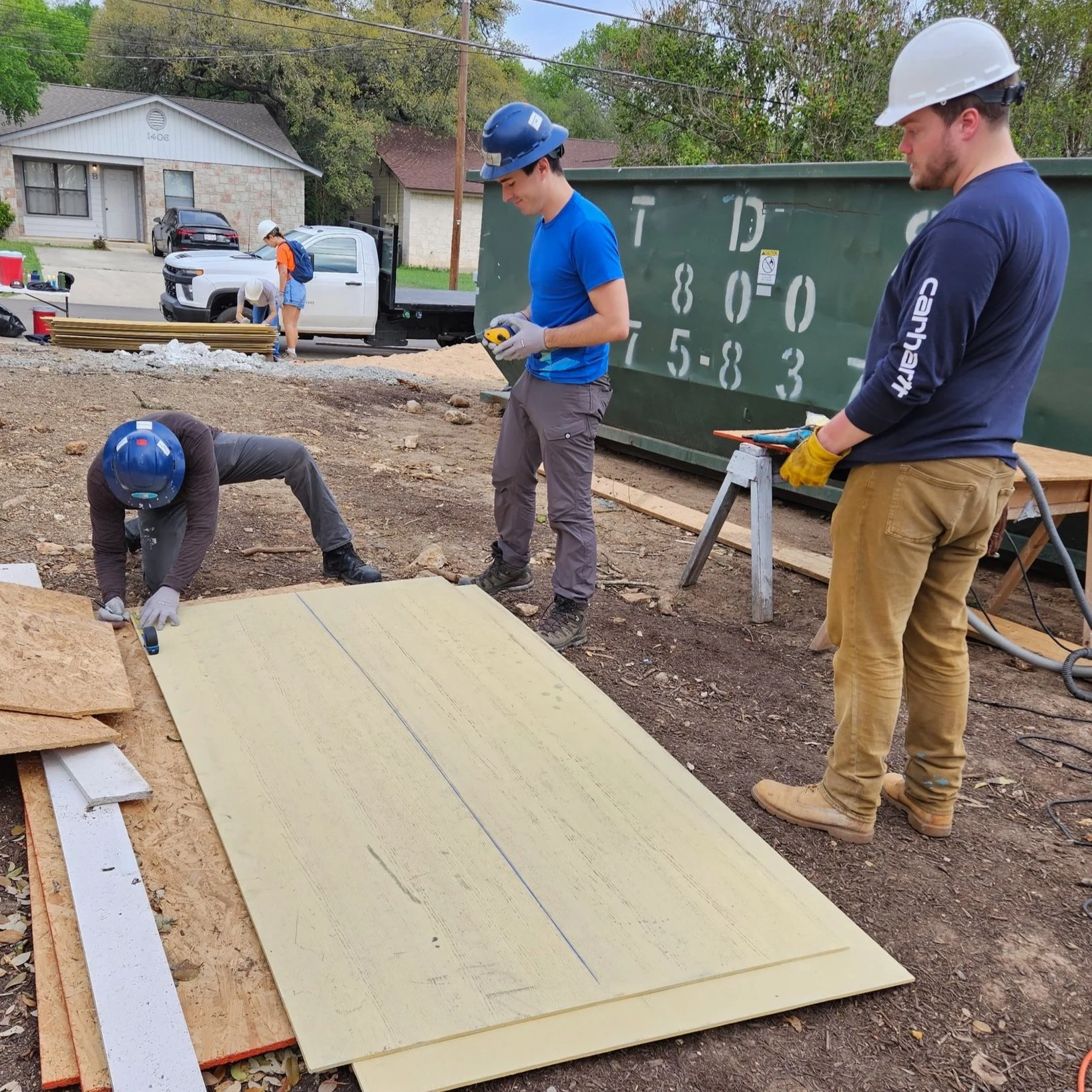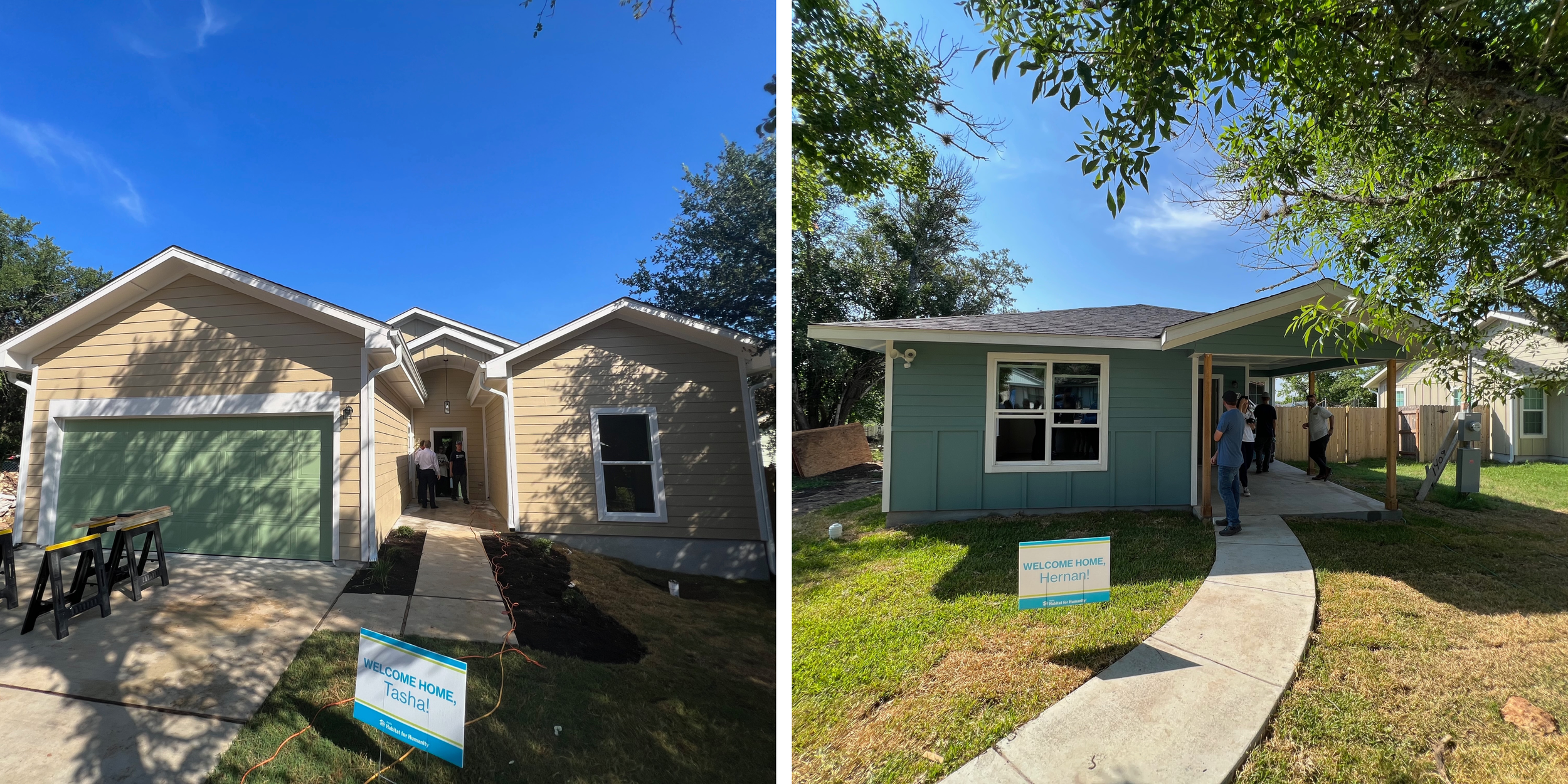Lessons in Leadership from Habitat for Humanity
Today, I’m excited to be taking the day off and volunteering at my local Habitat for Humanity for the wall raising of a new home. Over the past 18 months, I’ve enjoyed spending nearly every Saturday outdoors, away from my screens, learning new carpentry skills, and making new friends. I find this opportunity especially rewarding when I get to work alongside the new homeowner and meet their family. Additionally, seeing tangible progress as projects go from a flat slab of concrete to a move-in ready home is exhilarating. While this started as a fun hobby, I quickly realized the skills I developed on the construction site translated to my work at FlexPoint and vice versa.
Raising the first wall
After a few months of learning the ropes and building rapport with the site supervisors, I started to lead groups of between three and ten people with various components of the build. While this increased responsibility is exciting, tackling new tasks and roadblocks with an audience is daunting. Attempting to play the expert quickly taught me to throw my ego aside and embrace the messy learning process. I appreciate how Austin Habitat’s staff and volunteers strive to make construction, something out of many people’s comfort zones, approachable and fun.
Installing trusses and outriggers to support the roof
One of my favorite parts of the home build process is a tedious step that most people detest: putting siding on the home's exterior walls. Siding is the finished material that will be painted, and this is when the building starts to look more polished and like a home. This process requires significant patience as many small details collectively will either be unnoticeable (ideal) or noticeably sloppy.
BEFORE: A wrapped home that is ready for siding
Brace yourself for a detailed guide to siding - I warned you this is an elaborate process, didn’t I? Based on my experience, here are the ten steps for siding a house:
Prepare a prep area and workstation with ample space, safety equipment, and tools
Move large (four-by-eight-foot), heavy (50+ lbs.), delicate, and expensive concrete siding panels into the prep area
Measure and mark a horizontal line around the house to ensure each panel is attached at the correct height and plumb (not tilted)
Measure and mark the vertical and horizontal lines on each panel with chalk to assist with placement
Measure and mark any holes you will need to cut in the siding panel, like windows, doors, or plumbing
Cut all required holes in the siding panel, taking great care to be safe and accurate
Assemble a team to cautiously move the finished panel into place against the wall without ripping the waterproof wrap on the house or breaking flimsy parts of the board
Confirm the board lays flat against the wall, the holes are accurate, the height aligns with the previous board, and it’s vertically straight
Nail into place with 30+ nails using a semi-automatic nail gun
Repeat the process until each wall is covered
AFTER: Siding complete!
This past September, I led a team of nine fraternity brothers from UT Austin to start the siding process on a home. I began by giving them an overview of the process and setting a goal of doing a few panels together and splitting the group into two later for efficiency. They were enthusiastic and laser-focused after I shared that they would get to use a nail gun and that I’d never heard of a volunteer group completing siding for an entire house in one day.
Cutting intricate holes in siding using a jigsaw and electric shears
With alignment on a shared vision and all the needed tools, we were ready to begin. After demonstrating each task, I encouraged everyone to try different tasks and find what they preferred as we completed the first few siding panels together. As with most things on a construction site, the first piece (a panel in this case) is the most difficult and critical. The team was open-minded, patient, and resilient as we installed the first panel, being careful that it was plumb (perfectly vertical) and had the correct height. The next few panels were also painfully slow, but three hours into our eight-hour day, the team was well-versed and ready to form two make-shift assembly lines for increased efficiency.
The two teams quickly adapted to the shifting roles, brainstormed ways to optimize our bottlenecks, and built momentum. Naturally, two teams of college freshmen decided to compete in a race, which greatly enhanced our efficiency as we picked up impressive speed. With the increased speed came the need for quality control, as the repetitive tasks, triple-digit heat, and competition led to sloppy work. A couple of times, each team had to painstakingly remove 30+ nails from a panel that was inaccurately cut or installed and restart with a fresh panel. This was never fun news to deliver, but explaining the issue with a patient and positive tone helped the team to learn and avoid repeating mistakes. Failure is a great teacher in spaces where it feels safe to make a mistake and try again.
After eight long hours, the ten of us had nearly wrapped the whole house in siding, with only two panels left to install – a record, according to the site supervisors. The team accomplished this feat by taking care of themselves with frequent hydration and rest breaks, staying positive when faced with setbacks, and being flexible and willing to do what is needed to get the job done.
In summary, here are a few of the leadership lessons I’ve learned from Habitat:
Lessons in leadership from Habitat for Humanity
I learn something new from extraordinary people each week and find this incredibly fulfilling. This September day stood out because I saw the culmination of many challenges, highlights, and learnings from the previous year. One of my favorite memories from the day was of two fraternity brothers who preferred to spend the entire day chalking lines halfway down each panel as they danced and sang when they thought no one was looking. Another was in the home stretch when a panel with many intricate cuts would not attach to the wall easily. The team was extremely resilient, insisting on not wasting expensive material and installing the same stubborn board three times to get the job done right.
Chalking the center line on siding panels
Volunteering with Habitat offers more than a fulfilling way to give back to your community and learn about leadership – it’s a lot of fun. I would love to see you at one of the Austin Habitat for Humanity builds – I’m already signed up for the next four Saturdays!
Summer 2023: Home Dedications for Tasha and Hernan








